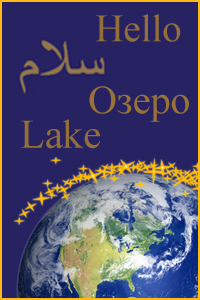Romanization

During World War II, the United States Armed Forces encountered a confusing multitude of different spelling and pronunciation variants of foreign geographic names. As a consequence, the United States government determined that it was necessary to standardize the "romanization" (conversion to English alphabet with appropriate diacritics for pronunciation) of all foreign language geographic names. This resulted in the establishment of the U.S. Board on Geographic entrusted Names (BGN) in 1947. Initially, the Interior and Commerce Departments were responsible for maintaining and updating all foreign language geographic name files based on BGN's newly established romanization tables for every language in the world. A number of years later, the function of updating the geographic names files for every country in the world was shifted to the Army Map Service, which later became the Defense Mapping Agency. Since 1996, geographic name files for all Romanized and non-Romanized languages have been maintained and updated by the National Geospatial-Intelligence Agency (NGA) through its Geographic Names Database (GNDB). The current structure of BGN includes a Domestic Names Committee (DNC) and a Foreign Names Committee (FNC) which is in charge of policy on the romanization of geographic names.
Over the past 50 years BGN has managed to establish geographic name country files for every nation in the world. These files have been continuously updated using authoritative native source material produced by official government authorities in each country.
GeoData's Analysts have been pioneers in updating the National Geospatial Intelligence Agency's (NGA) Geographic Names Database (GNDB) for over 25 country files on four continents. Moreover, a number of GeoData's Linguistic Experts were the first to initiate and complete the Quality Assurance (QA) process for NGA.